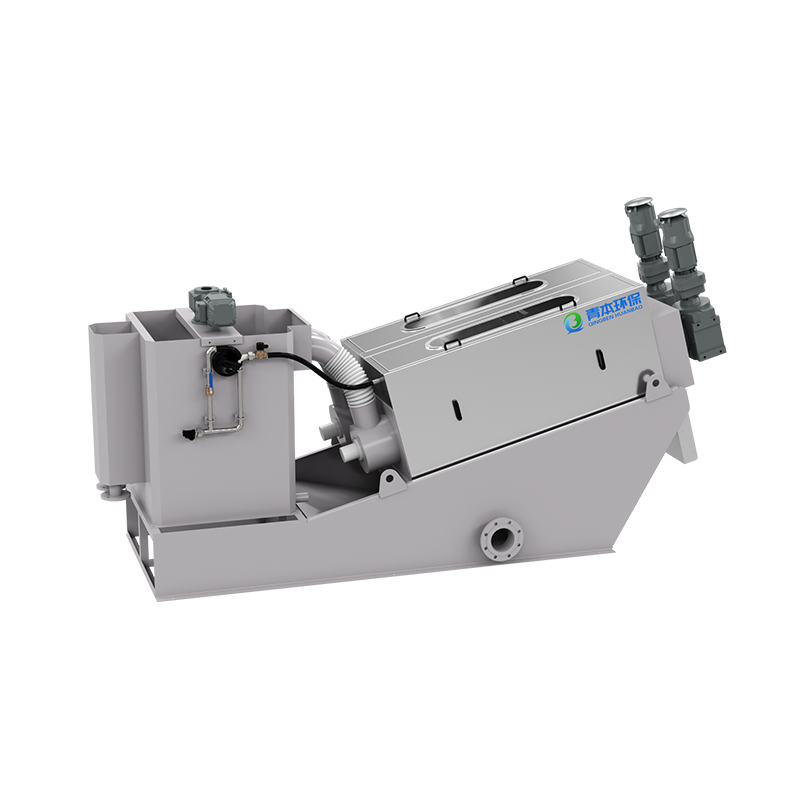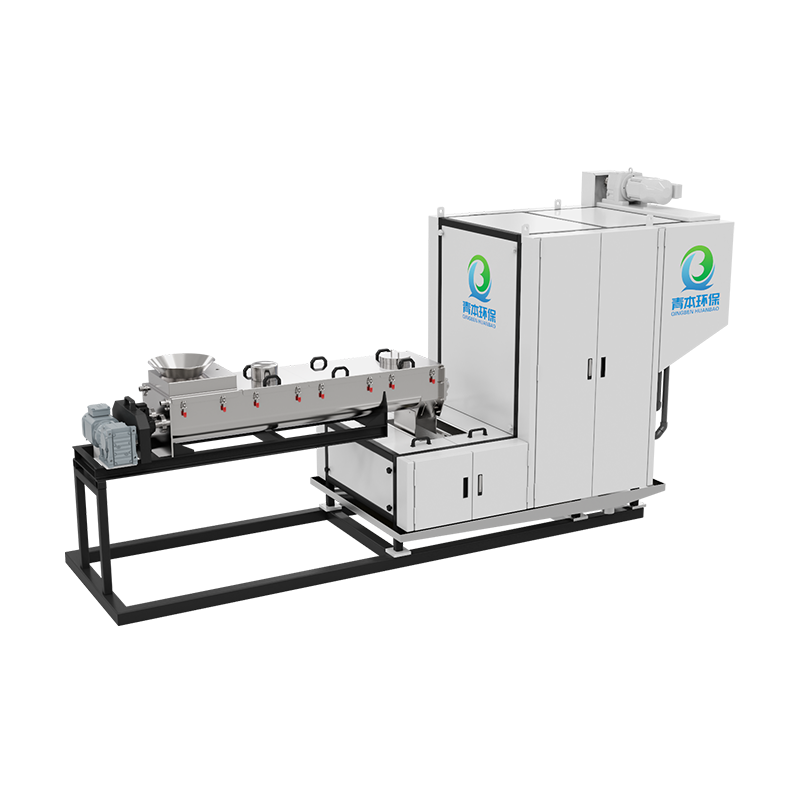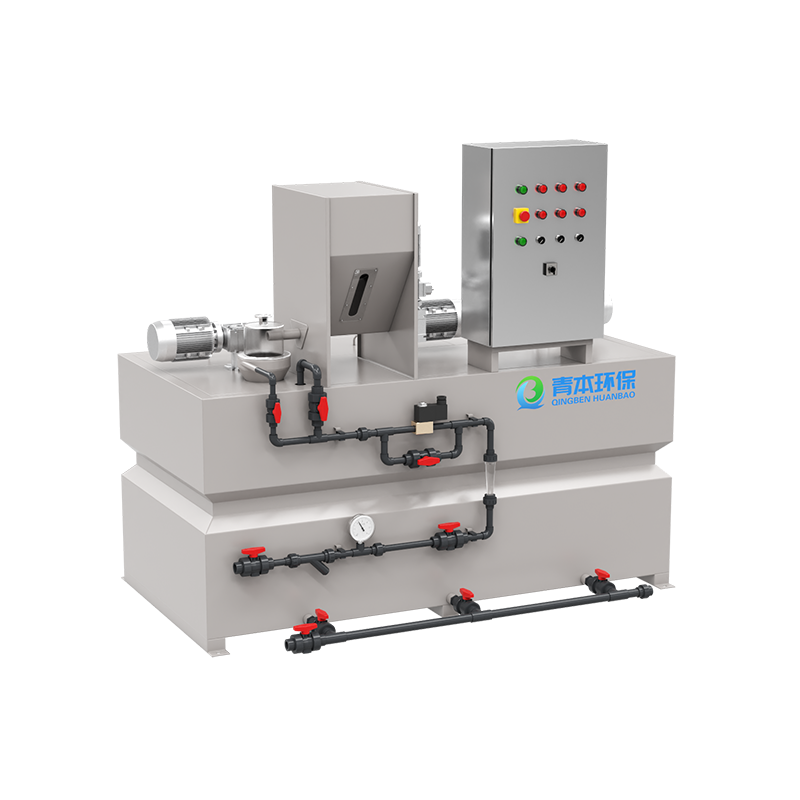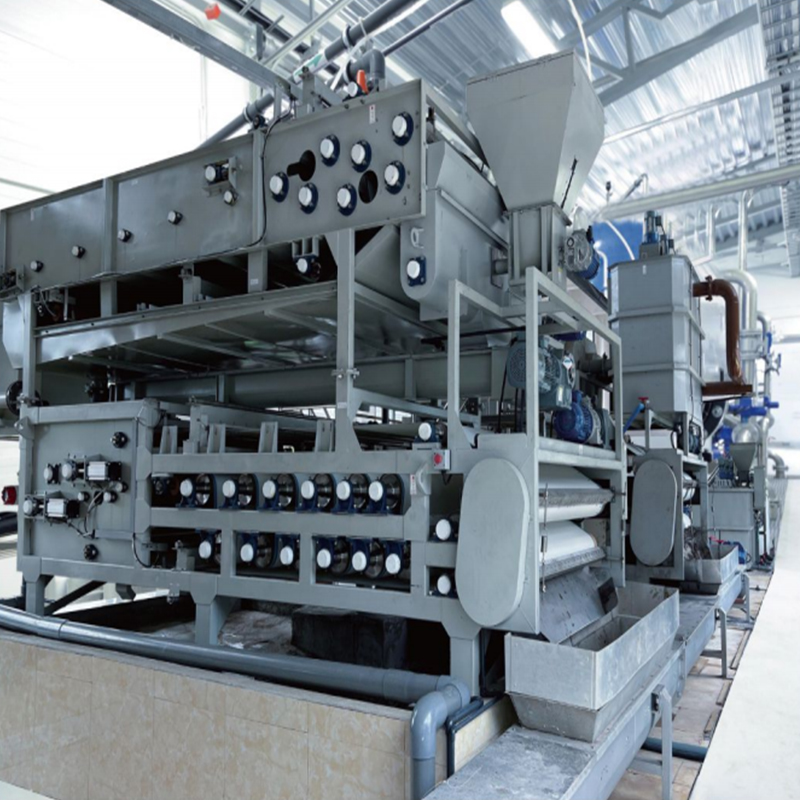Content
1. Working principle of the screw press sludge dewatering machine
The screw press sludge dewatering machine integrates an automatic control cabinet, a flocculation conditioning tank, a sludge concentration and dewatering body, and a liquid collecting tank. It can achieve efficient flocculation under automated operation conditions, continuously complete the sludge concentration, pressing and dewatering work, and finally return or discharge the collected filtrate. The screw press sludge dewatering machine mainly includes three continuous stages: concentration, dewatering and self-cleaning:
(1). Concentration stage:
Sludge with extremely high water content enters the screw body inside the equipment from the feed port. The screw body is composed of countless fixed rings and floating rings stacked on each other, with tiny gaps between them. The sludge moves forward under the push of the screw shaft. Under the action of gravity, some free water is filtered out from the gaps between the rings to achieve initial concentration.
(2). Dewatering stage:
The concentrated sludge continues to be pushed forward by the rotating screw shaft. The pitch of the spiral shaft gradually decreases, and the gap between the rings is gradually compressed. The spatial pressure on the sludge becomes greater and greater, just like a sponge tightly held by a hand, and the bound water inside is forcefully squeezed out.
(3). Self-cleaning and sludge discharge:
While the spiral shaft rotates and pushes the sludge, it drives the floating ring and the fixed ring to produce a small relative movement, which can continuously scrape away the sludge blocked in the filter gap, achieving continuous self-cleaning, which is the key to its non-clogging. Finally, the fully dehydrated mud cake is squeezed out from the mud outlet at the back pressure plate, and the filtered water flows back to the drainage trough through the gap between the rings.
2. Precautions when using
Although the advantages are outstanding, in order to achieve its best performance, the following points should also be noted:
Matching of sludge properties: It is better at processing sludge with high organic content. For inorganic sludge with extremely high sand content and excessive fiber content, the effect will be reduced and it is easy to increase wear.
The Importance of Flocculation and Conditioning: Before dewatering, flocculants such as PAM (polyacrylamide) are typically added to the sludge to agglomerate fine sludge particles into large flocs (flocculation), which effectively separate the water. The effectiveness of flocculation directly determines the final dewatering performance.
Regular Maintenance: While routine maintenance is simple, it's still necessary to regularly check the wear of the screw shaft and rings, and clean the spray system promptly to prevent complete blockage of the filter slots.
3. Features of the Screw Press Sludge Dewatering Machine
| Core Functions and Advantages | Description |
| Efficient Dewatering and Volume Reduction | Dehydrates thin sludge with a moisture content of over 99% to a cake of approximately 80% or less, reducing its volume to a fraction of its original size, achieving significant volume reduction. |
| Continuous Automatic Operation | Enables 24-hour unattended operation, offering a high degree of automation and reducing labor costs. |
| Energy Savings and Consumption Reduction | The main motor has low power and operates at a low speed (approximately 2-3 rpm), consuming far less energy than other equipment such as centrifugal dewatering machines, resulting in low operating costs. |
| Resistant to Clogging | The unique dynamic and static ring filter slot structure features a self-cleaning function, effectively preventing clogging. It is particularly effective at processing oily and sticky sludge. |
| Compact Structure and Space Savings | The integrated design occupies a small footprint, often integrating the thickening, dewatering, and electronic control systems into one unit, eliminating the need for a separate, bulky thickening tank. |
| Widely Applicable | Suitable for treating organic sludge generated by municipal wastewater and various industrial wastewaters (food, chemical, pharmaceutical, textile, papermaking, etc.). |
| Durable and Easy to Maintain | Core components are often made of stainless steel or special wear-resistant materials, ensuring a long lifespan and simplifying routine maintenance. |




















